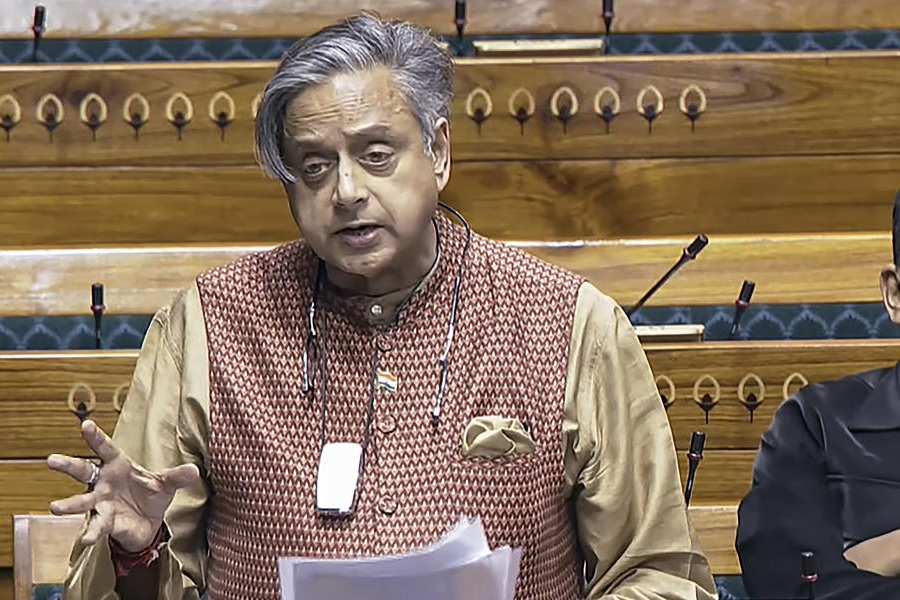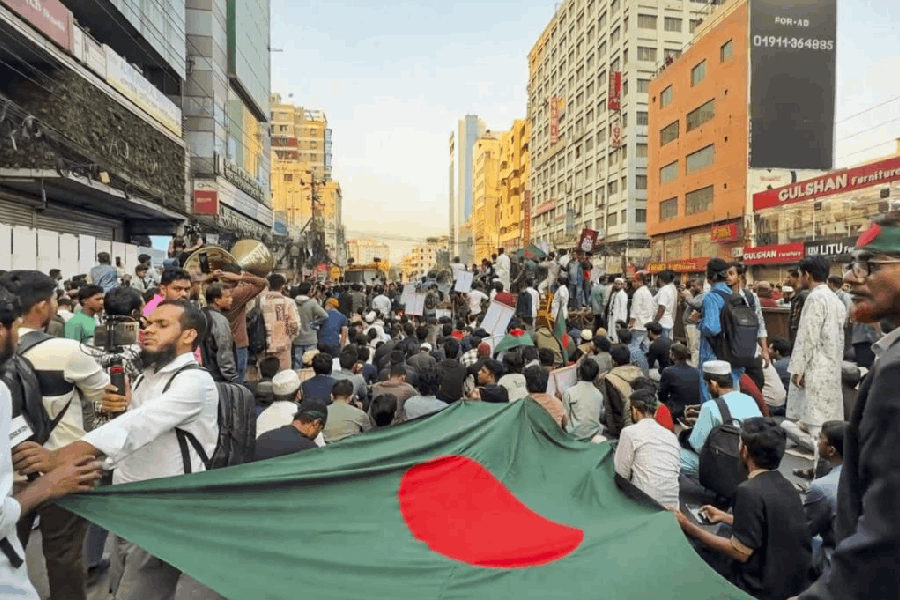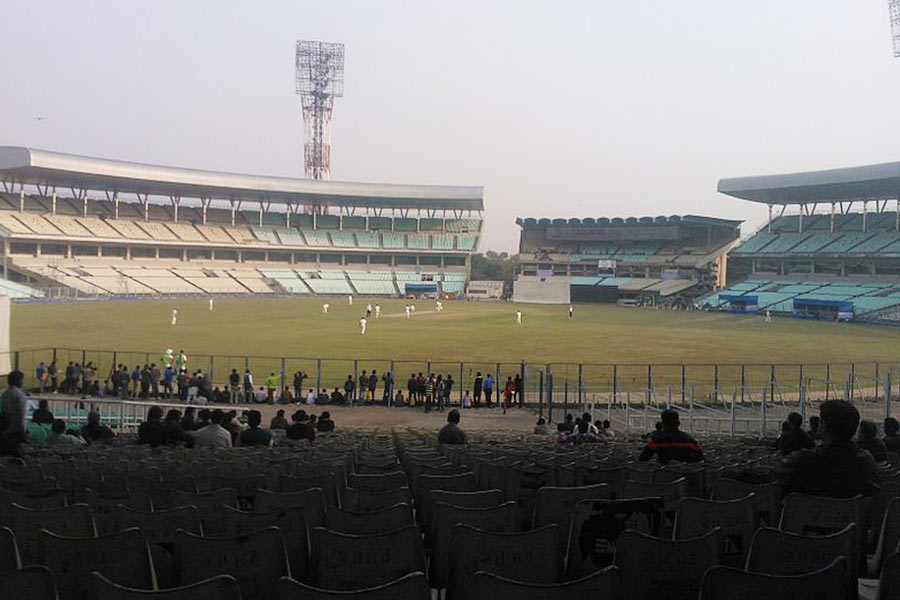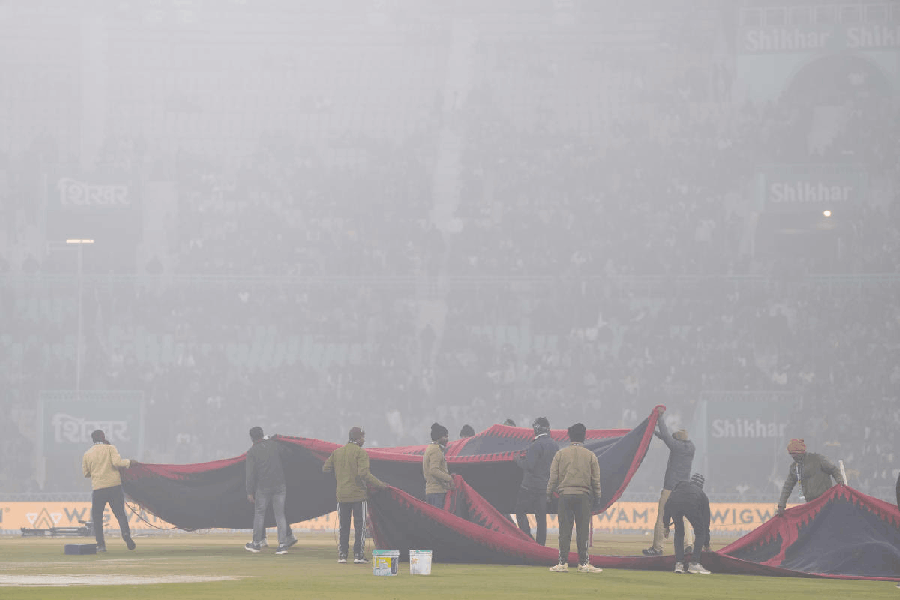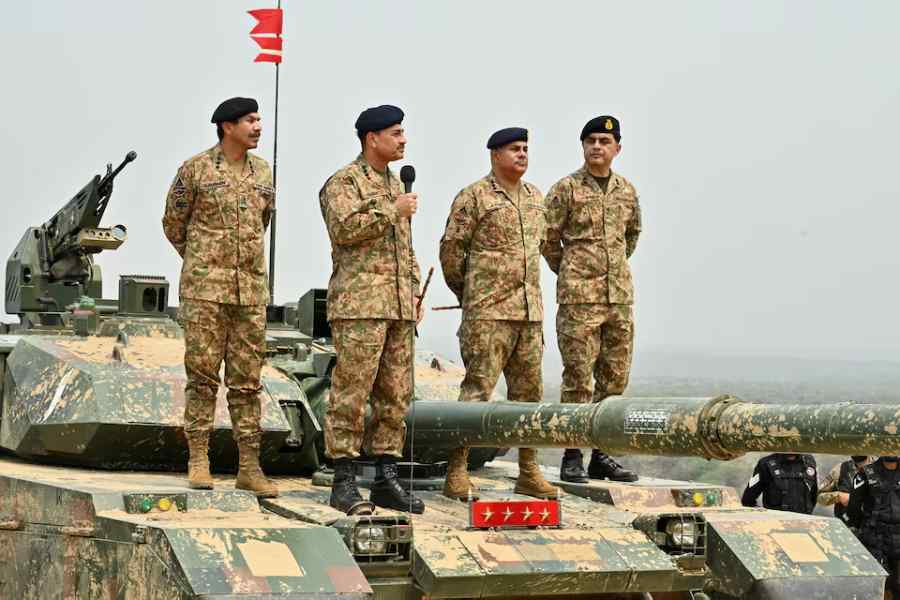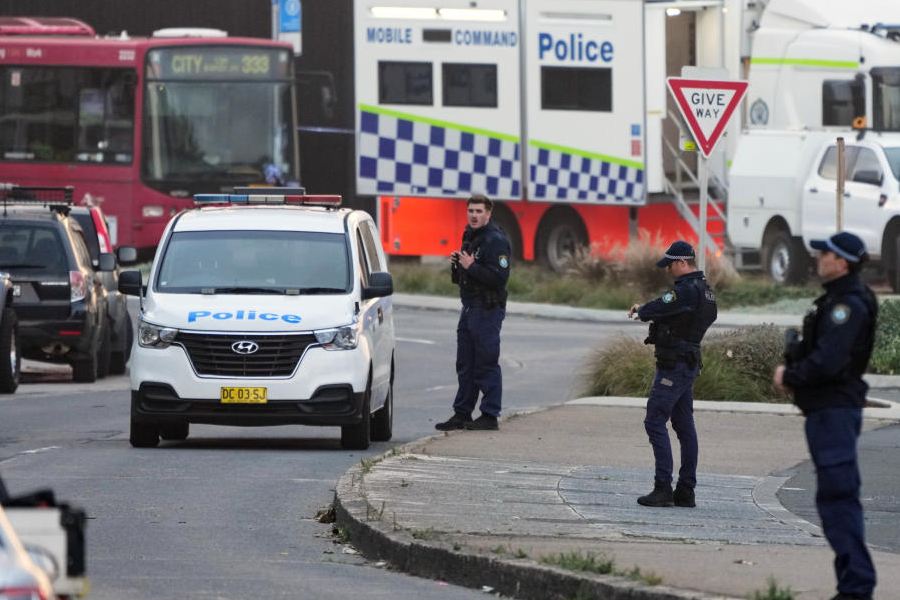 |
| HIGH TRAGEDY: Remains of a settlement after last year’s devastation |
In the northern village of Skampuk in Nubra Valley, lithe and pretty Stanzin Yangdol dresses swiftly. She applies a dab of foundation, some lipstick and even gives an expert twist of an eyelash curler before she slips on the turquoise-stone maillot headgear and the ceremonial royal blue and gold robes of a traditional Ladakhi Buddhist bride. Under a large canopy nearby, the entire village has gathered to celebrate the wedding, dancing in conga-like lines to the drums and pipes played by local musicians.
Flagons of the local beer — chang — make their way around the gathering. This is one of the first weddings a year after the rare flashflood that took over a hundred lives around Leh last August. No one quite remembers how long the downpour lasted: 15 minutes or was it 30? Accounts differ, but there’s no dispute over the extent of the devastation. Entire settlements were wiped out and in a place where it is uncommon to see buildings over five floors high, cars had washed up on the roofs of some houses.
“That night we rushed out and just sat inside our cars. There was no way to go anywhere, the roads were jammed and the storm was furious, but we still felt safer outside our home, which could be swept away,” recalls Tundup Thinlas, a shopkeeper in Leh, of the events of August 4.
Eventually, the floods turned another kind of spotlight on a region that is usually talked about either as an alpha tourist destination or a strategic army outpost. Kargil, where the last major India-Pakistan conflict took place in 1999, is situated in Ladakh. Indian tanks also patrol the lengthy borders that Ladakh shares with China.
 |
| Stanzin Yangdol in her marriage procession at Skampuk. Pictures by Manjula Sen |
A year on though, Ladakh has seemingly regained its stride. Government compensation for the flood-hit has been dispensed to over 1,300 families and the mountain of aid material that arrived has been sorted and distributed. Foreign and, increasingly Indian, tourists are back in vast numbers in the land of the tso-s (lakes) and la-s (mountain passes). And the nomads are grazing their yaks and pashmina goats tranquilly. Ladakh is back to normal.
However, “normal” has changed in Ladakh, be it socially, culturally, economically or politically.
The winters have become warmer, the region has become a favoured destination for domestic tourists, there is an undercurrent of political restlessness and a historical heritage is being lost to its young people who are now more exposed to cross-cultural influences.
“The pace of change is shocking. I am very worried. If we lose the link with the past and our heritage, it will be a great loss. For thousands of years there was little change here, but in the last 30 years we have moved from the medieval age to the jet age,” says Rigzin Spalbar, chairman, Ladakh Autonomous Hill Development Council.
Part of the bulletspeed change has stoked discontent — earlier felt but not always voiced. A hammock between Jammu and Kashmir, Ladakh is chafing at what it considers indifference and neglect by the powers that be. “We have no geographical, linguistic, cultural or religious homogeneity with Jammu and Kashmir. We feel a sense of being oppressed by the ‘Muslim rulers’ of J&K,” says a government officer heatedly, requesting his name be withheld. “Most Ladakhis would like a separation from J&K,” says Tsering Gyaltsen, who runs a homestay in Thikse.
 |
| RITE OF WAY: Stanzin Yangdol in bridal gear and (above) her marriage procession at Skampuk. Pictures by Manjula Sen |
Ladakhi traders and businessmen are quick to give examples of perceived neglect. There are three parts to J&K — Jammu, Kashmir and Ladakh, “but we do not get even 1 per cent of the funds. There are four representatives from Ladakh in the J&K Assembly and only one member of Parliament,” Gyaltsen points out.
“We are hurting every day but our voice does not reach the Government of India. Fourteen per cent of Ladakh’s population died in the Kargil War. Deshbhakts are neglected while deshdrohis get more attention,” adds Tsewang Angdus, a businessman and a retired air force pilot.
“We get very meagre funds, about Rs 6,000 crore annually for a region that spans 49,000 sqkm,” despairs Spalbar. He acknowledges that many Ladakhis are keen to be self- governed. The situation could go up “in flames” if the Ladakhis’ grievance is not addressed.
“We were put under the subjugation of the Kashmiris in 1947 although ethnically we have no similarity with them. The special status of J&K is a problem for the Centre, but ultimately we must get Union Territory status,” he says.
The craggy beauty of Ladakh has drawn visitors who are charmed by its palette of textures within a span of a few kilometres. Snow-covered slopes run into deserts and sulphur springs merge with gleaming dark mountains. One would need an entire thesaurus of blue to describe the shades of Ladakh’s lakes that are typically over 17,000 feet above sea level. The stars that flood the night sky in Ladakh have led to the location of the world’s highest observatory in Hanle.
However, Ladakh has no major industry — barring farming and tourism — and infrastructure such as roads and telecommunication continue to be poor. For instance, visitors with non-J&K cell phone connections cannot send messages outside Ladakh.
While the National Highway 1 links most of Ladakh’s tourist attractions, the region is poorly connected otherwise and left to the mercy of the elements. “In all these years, we have not had a single all-weather road,” points out Angdus. It is the Ladakhi’s biggest grouse.
Ladakh is criss-crossed by good “black-top” roads (as opposed to makeshift pathways) mostly used by the army. But without an all-weather road, the area remains cut-off for six to seven months in a year. That’s when the price of airfreighted vegetables like tomatoes touches Rs 130 for 250gm.
Padma Kunzes, 11, hops onto the school bus for an hour’s ride each way and then takes a long walk home near Achinathang. She catches a lift with this reporter and along the way, as we run parallel to a muddy Indus, she points to where the river washed away the road that morning.
“We are very backward compared to China. China has built a train line to Lhasa. It has army trains coming to Demjok village on their side and about 3km from Chushul (in Ladakh),” worries Angchuk Tsao, a road contractor.
To add insult to perceived injury, the contracts for road building, a major source of employment, are given to non-Ladakhis. “We’d build it better and faster — we are used to high-altitudes and know what works in this terrain,” says Tsao. The construction of the Leh-Srinagar highway has been going on for five years and yet not even 60km has been completed, observers point out.
In the absence of any major industry or employment avenue, a government payslip is on most jobseekers’ wishlist. Angmo Chorol is a young woman in Leh who is awaiting her results of a state civil services exam.
Given a choice she would rather be a mountaineering guide but she will not oppose her parents’ wish for a secure job. “Ladakh is very underdeveloped. We need young people to stay and work towards a better future for ourselves. Ladakhis tend to be too easygoing and polite and that can sometimes backfire. I am actually inspired by the Telengana movement and what the youth there has done,” she says, somewhat surprisingly.
The wish to have a greater say in how their region is governed flows in part from what they see as not just a lack of infrastructure and economic opportunity, but also the burden of association. “If there is unrest in Kashmir, routine life in Ladakh is not disrupted. But media reports fail to distinguish between Kashmir and Ladakh and it affects tourism here,” says Tashi Morup, projects director, Ladakh Art and Media Organisation.
****
The army presence in the region is one of the largest in the country. It is believed that a third of the Indian Army is stationed in Ladakh. “The army is the biggest industry in Ladakh, followed by tourism,” says a self-appointed wit in Leh. For Ladakhis this has been a mixed blessing. In a terrain where winter cuts off access to supplies, the army stores and hospitals are a welcome recourse.
Yet the vast presence of the army means large chunks of land have been removed from public access and those who need the land most are the worst-hit. “We have to take our flocks further to graze,” says Tibetan nomad Ishey Chotak, holding her grandson Karma Dolma in her arms, as she prepares butter tea in her tent in Karzok.
Tensions between the army and the local police crop up occasionally. An army officer was pulled up in June by a local magistrate for pulling rank over Leh’s police. Voluntary organisations also complain about army vehicles without number plates, leading to lack of accountability in hit-and-run accidents.
With a huge transient population of tourists, traders, army and labourers, the Ladakhi can be forgiven for feeling outnumbered in his own home. “The bar on outsiders buying land in J&K and the unforgiving winter is what saves Ladakh and its unique culture,” shrugs David Sonam, a Leh hotelier, philosophically.
In the settlement of Saboo in Choglamsar, on the outskirts of Leh, the cloudburst wrought the most havoc. Most of those who died were labourers from Bihar, Uttar Pradesh and neighbouring Doda and Jammu. “My tenants were five men from Bihar, but they survived,” says Jigmet Dorje, a retired army cook who owns one of the few houses that are still intact.
It’s hard to find a local electrician, mason or carpenter in Ladakh. “Without the Biharis and the bhaiyas, our hotel and housing industry would collapse,” says a local businessman. Skilled labour earns between Rs 300 and Rs 600 a day, making places like Leh an attractive destination for migrant workers, who return to their homes in winter.
****
Young bride Stanzin met her army man husband-to-be Jigmet Wangchuk when he was stationed near her village. They eloped. Unlike in many other parts of the country notorious for vengeful families offended by elopements, Ladakhis have a more relaxed approach to matters of the heart. “After the dust settles, the groom’s family calls on the girl’s and apologises for their son’s temerity and they settle a date to bring the bride to her in-laws’ home with ceremony,” says Sonam who is now Stanzin’s uncle-in-law.
Sonam’s camera is busy as he narrates the finer points of a Buddhist wedding, stopping only to take a bite of khambir, a kind of bread baked for such occasions. The following week he was to attend another nephew’s marriage, this time a short Muslim ceremony. Sonam also has a sister who is a Christian.
Thanks to a small, intimately meshed population, Ladakh’s religious intertwining has been organic, leading to a composite culture with largely Buddhist influences. For instance, in Rashid’s family that comes from the village of Hunder, his father and uncles chose to marry Buddhist women who continue to practise their own religious traditions. Lately, however, there are rumblings about hardening faultlines, with the Buddhist Monks Council, an influential body, expressing their displeasure about Buddhist women converting to Islam when marrying Muslim men.
Memories of 1989 are not too distant either. A movement in Leh against the Kashmir-based government spilled into an anti-Muslim boycott in Ladakh, called by the Ladakh Buddhist Association (LBA). The aftertaste of that episode lingers as people obliquely express their fear that local social change may be hijacked by national politics.
The LBA has also footsied with the BJP in the matter of identity politics. “It’s a tricky game to play,” says Tundup Angmo of Save the Children, an organisation that was engaged in large-scale relief work and has opened schools across the region. “The LBA wants to control people’s lives, partly because the Buddhist population is down from 80 per cent to 60 per cent now,” explains Angmo who hopes that tensions will not flare up in any major way.
“Ladakhis are different, somehow. Very gentle, educated and co-dependent on each other. They are married into each other’s families,” she adds.
She is more concerned about the alienation of youth from their local moorings. “Cases of drug abuse are rising among young people, with drugs coming in from Kargil,” she says. Two women were recently dropped off at the civil hospital, unconscious from the effects of intravenous drugs. In the village of Hanu, a father steps across to a well-connected visitor from Leh and requests him to see that an alcohol peddler is stopped from prowling around their province.
Another cause for worry is that in Ladakh, which is largely pastoral, the younger generations are disinterested in family occupations such as farming. Even among the nomadic tribes of the Changpas and Rupshus, the educated youth no longer want to graze their cattle and shear pashmina wool. And the famed churpon tradition of water guardians who were responsible for the equitable distribution of scarce water resources is no longer ubiquitous. Nor is the tradition of phaspun, which ensured the family was taken care of in the event of the breadwinner’s untimely death. Somewhere, the transition from community living to urbanised nuclear families has begun.
“Ladakh has to change. We can’t remain an item of curiosity or a zoo exhibit. All we are asking for is a fair hand,” says Spalbar. “It is the duty of India to look after a unique place in the country. We have to pursue a GDH (gross domestic happiness) and not a GDP.”
Accelerated social and political change may be the spur for Ladakhis to push for greater reform in their region. It remains to be seen if Ladakh will boil over in the not too distant future or simmer down as it finds its own rhythm and recipe for progress.


